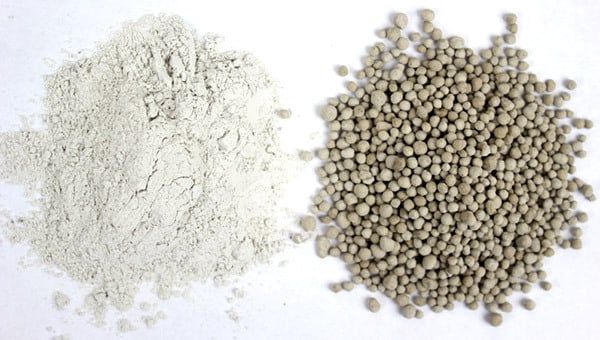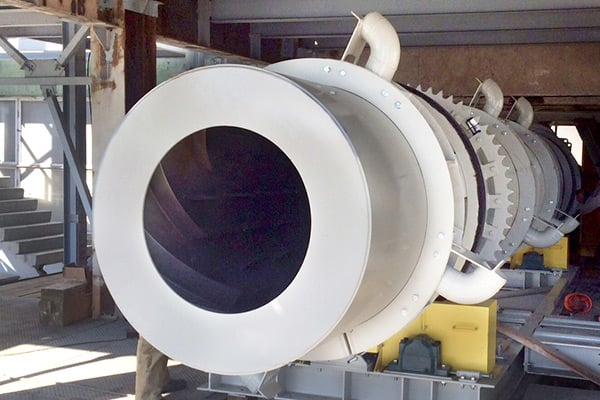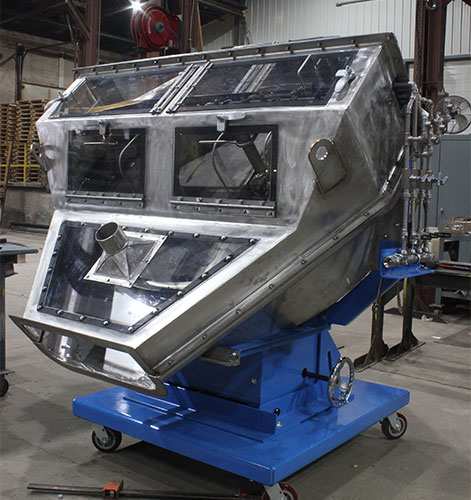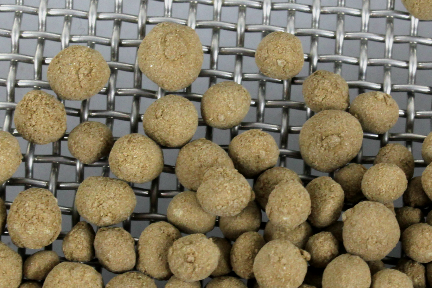Limestone processing equipment plays a critical role in transforming quarried limestone into a variety of valuable products, but the material’s diverse characteristics often present unique challenges in production.
From its variable chemical composition to its tendency for buildup and abrasion, limestone can complicate operations if not properly managed. Understanding these challenges and how to address them is essential for optimizing efficiency and ensuring high-quality results. The following explores the key characteristics of limestone that influence processing and the strategies and equipment modifications that can help overcome these hurdles.
Common Limestone Processing Challenges
Varying Chemical Composition
Limestone’s chemical composition can vary significantly from source to source, and even within the same deposit. The mineral is frequently accompanied by impurities such as SiO2, Al2O3, and MgCO3.1
The incredible diversity limestone deposits exhibit often make for challenging and unpredictable processing conditions, regardless of the type of process objective undertaken.
Varying Physical Properties
In addition to varying chemical composition, limestone can also vary significantly in physical properties such as moisture content, grain size, density, and more. As with chemical composition, this can also vary across sources of limestone and within the same source.
Addressing Limestone Variation
This variation in both chemical and physical properties is perhaps limestone’s most challenging quality, because it creates a high level of unpredictability.
For this reason, process development testing is frequently necessary to establish a baseline of parameters for the given source to be processed.
Testing also helps to work out the process and equipment configuration that will best suit the given source of limestone.
The FEECO Innovation Center offers a particularly beneficial environment for limestone producers through a combination of extensive background knowledge on the material and a comprehensive, flexible equipment setup. Key process equipment available for testing includes:
A variety of support equipment is also available.
The facility can accommodate testing on a single piece of equipment, or a continuous process loop. This is especially advantageous to soil amendment producers looking to develop a pelletizing line, as the entire pelletizing process, including drying and recycle loop, can be tested in the facility’s pilot plant.
This is also useful in troubleshooting and evaluating changes to existing processes, allowing producers to run tests without affecting the live production environment or risking production schedules.

Powdered limestone before and after pelletizing in the FEECO Innovation Center
Prone to Clumping & Buildup
The clay components commonly found with limestone can cause the mineral to become sticky, which can in turn cause a number of issues, not limited to handling, loading, and transfer problems. Process inefficiencies, clogged equipment, and frequent shutdowns and cleanouts are not uncommon.
If the limestone is destined for use as a granular soil amendment, clay may help or hinder the agglomeration process, depending on the specific type and quantity of clay present; clay can encourage agglomeration, acting as a binding agent.
Conversely, too much clay can cause the material to behave more like a slurry or cake, making agglomeration incredibly difficult or even impossible.
Addressing Limestone Buildup
Materials of Construction & Equipment Fabrication
Materials of construction play an essential role in minimizing buildup, with smooth finishes such as stainless steel helping to reduce the initial potential for material to catch and accumulate.
Equipment welds in contact with the material should also be ground smooth to prevent catch points.
Drying Limestone
The drying step carried out after primary crushing can help to reduce the tackiness of clay, but may require special modifications such as knockers to prevent sticking within the dryer itself.

Ball-and-tube knockers on a rotary drum
Buildup prevention during drying is critical, as buildup could otherwise lead to inconsistent product, lost material or the need to reprocess off-spec product, and damage to equipment when buildup breaks away and migrates downstream.
Equipment Modifications
Belt conveyors can be particularly prone to buildup on the underside of the conveyor after discharge. Known as “carryback,” this stuck-on material then makes its way into idlers and other mechanical components, creating issues. To prevent carryback, FEECO recommends incorporating dual belt cleaners into conveyors.
Buildup is also more likely at higher moisture contents, making the dryer susceptible to issues, as we’ve already mentioned.
In addition to employing knockers on rotary dryers, a bald or flightless section can also be incorporated at the inlet to allow some moisture reduction prior to flight exposure, where buildup is more likely.
Abrasion
Mined limestone is abrasive as a raw material, particularly if it has a high silica content. As such, equipment must be designed not only to handle the high tonnages associated with limestone processing operations, but also to withstand the material’s abrasive quality.
Addressing Limestone Abrasion
Materials of Construction
As with buildup, materials of construction play a key role in managing abrasive wear. Equipment such as rotary dryers, disc pelletizers, granulation drums, and the like will all require careful consideration of materials of construction.
Materials such as abrasive-resistant (AR) steel may be necessary for parts or entire pieces of equipment. High-wear areas may require additional reinforcement such as liners or thickened sections to defend against abrasion.
Pin mixers, for example, are especially prone to abrasive wear if not carefully managed, due to the intense spinning action the mixer employs. Spinning at several hundred RPMs, the pins could quickly experience significant wear if not sufficiently armed. To minimize excessive wear, mixer pins are often coated with a protective layer.
Dusty
Limestone is also known for exhibiting a high level of dust, which can be problematic at any stage of production.
Addressing Limestone Dust
Pelletizing
Pelletizing is frequently employed to largely eliminate dust in finished limestone products (among other materials), particularly those in the soil amendment industry.
Unfortunately, however, this does not help to address dust during initial processing stages. To manage dust early in limestone processing, producers can take a variety of approaches, depending on their specific setting and requirements.
Dust Management Techniques
In some cases, dust management may be approached through wetting limestone to prevent airborne particulates, enclosing equipment for dust containment, or employing dust collection equipment such as baghouses. In addition to creating a cleaner, safer production environment, dust collection systems also present the opportunity to reuse collected dust, allowing producers to recover otherwise-lost product.
Equipment Modifications
Equipment modifications can also help in the fight against dust.
Process equipment will need to be properly sealed to minimize any fugitive material. Disc pelletizers may also be fitted with a cover to reduce dust during the granulation process.

Hooded disc pelletizer with observation windows
Dust management becomes especially important with limestone handling equipment, where there is an especially high potential for dust generation. Equipment such as belt conveyors and bucket elevators will need to be thoughtfully engineered to minimize dust during handling, particularly at transfer and feed points.
Conclusion
While limestone is a versatile and widely used material, its varied chemical composition, physical properties, and tendency for clumping, abrasion, and dust generation present several challenges in processing. Addressing these hurdles requires a combination of carefully selected materials of construction, customized equipment design, and process adjustments. From preventing buildup and abrasion to managing dust, an experienced manufacturer is required to optimize limestone processing equipment.
FEECO has been engineering and manufacturing custom limestone processing and handling equipment since 1951. Backed by unmatched expertise, extensive testing capabilities in our Innovation Center, and our comprehensive parts and service program, limestone producers can be confident that their processes meet efficiency, equipment longevity, and product quality expectations. To see how we can improve your limestone processing operation, contact us today!
SOURCES:
- Gupta, Prithviraj & De, A. & Biswas, Chanchal. (2017). The effect of impurities on the calcination behaviour of CaCO3 nuggets. Journal of Engineering Research. 5. 34-45.

